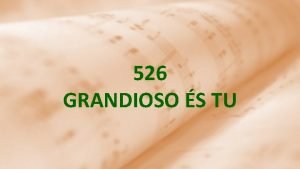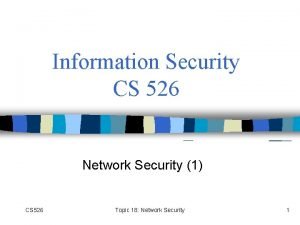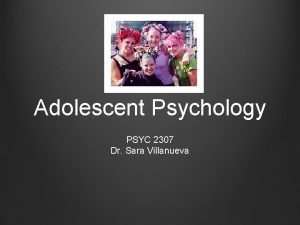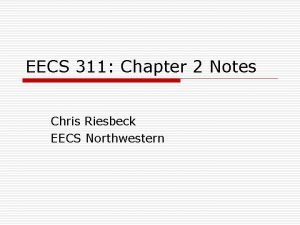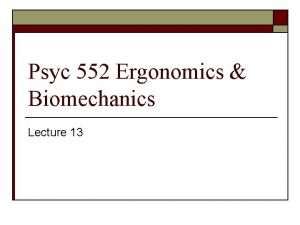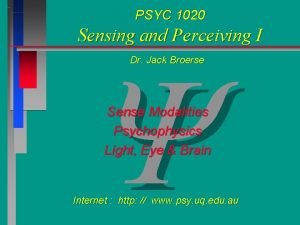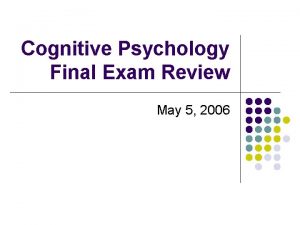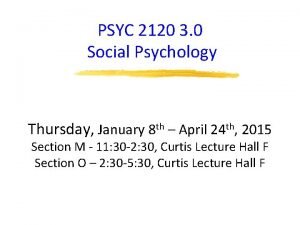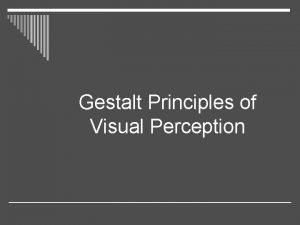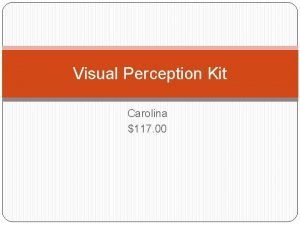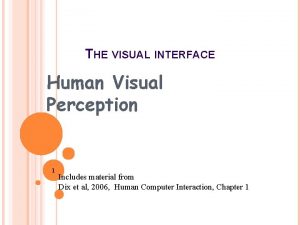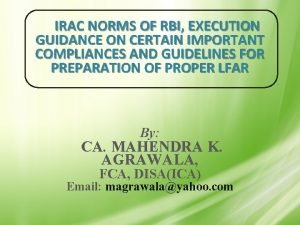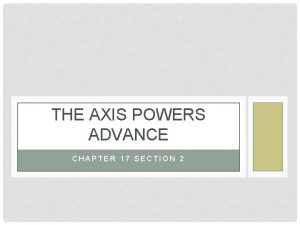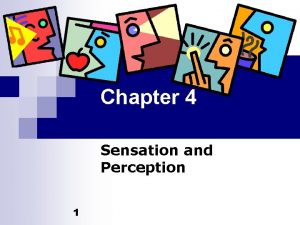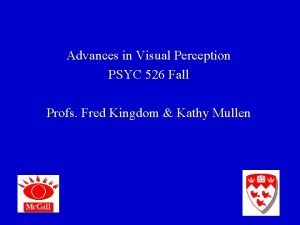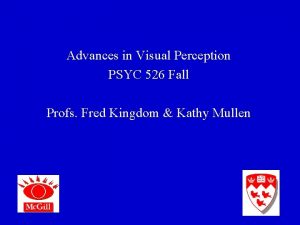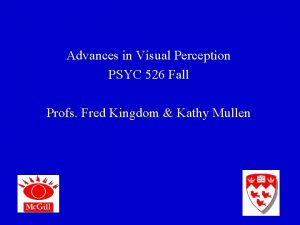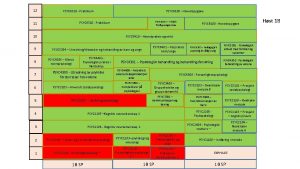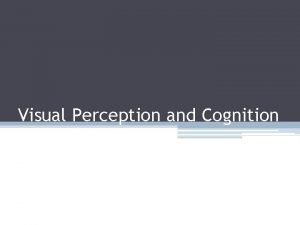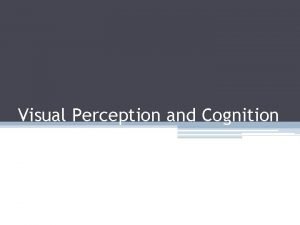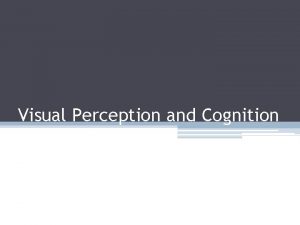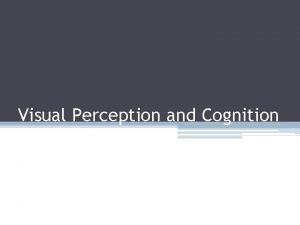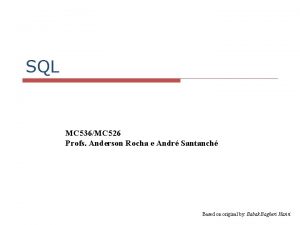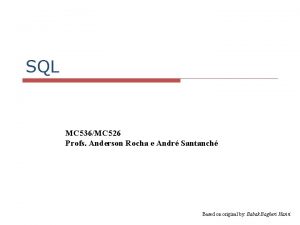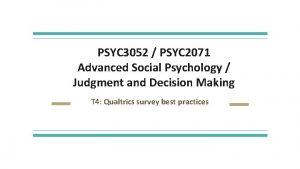Advances in Visual Perception PSYC 526 Fall Profs










































- Slides: 42

Advances in Visual Perception PSYC 526 Fall Profs. Fred Kingdom & Kathy Mullen

Lecture 3 “Seeing Objects” Readings Goldstein, 5 th ed: Ch. 7; 6 th, 7 th ed: Ch. 5. Bruce et al. , "Visual Object Recognition" Ch. 9 in Visual Perception. Hove: UK. (1996), Web. CT. Tovee "Object perception and recognition" Ch 8 in An Introduction to the Visual System, Cambridge University Press (1996), Web. CT.

Edges in cave paintings

Cartoon drawings

Children’s drawings

‘Two-tone’ image High-pass filtered

‘Two-tone’ image High-pass filtered


Effects of bandpass filtering Unfiltered Lowpass filtered Highpass filtered


Zero-crossings in filter output

Zero-crossings at different scales

‘Blocked’ image

‘Blocked’ images & zero crossings

Seeing contours

Straightish path Curvy path Field, Hayes & Hess (1993)

Common fate Courtesy of Tony Movshon, New York University


Symmetry

Visual completion


Ambiguous figure

Salvador Dali


Penrose staircase

Escher

Spatial frequency (SF)

‘Light-comes-from-above’ assumption

Colour shading effect

Courtesy of Dan Kersten, University of Minesota

Courtesy of Dan Kersten, University of Minesota





Kanizsa triangle

Muller-Lyre illusion

Muller-Lyre illusion

Gregory’s explanation

Illusions of perceived size

Zollner illusion

“Prior knowledge and/or top-down processing ? ” 1. Gestalt law of good continuation 2. The motion after-effect 3. The ‘light-comes-from-above’ assumption 4. Colours of the rainbow 5. Orientation-selective neurons in the cortex 6. Illusory contours, as in the Kanizsa triangle 7. Mirror-symmetry ‘pops-out’ 8. Insensitivity of cortical neurons to uniform 9. illumination 10. 9. Common fate
 Energy profs
Energy profs Senhor meu deus
Senhor meu deus Network systems design using network processors
Network systems design using network processors Sempure 60
Sempure 60 Cs 526
Cs 526 Byzantine empire 526 ce
Byzantine empire 526 ce Ece 526
Ece 526 Rounding jeopardy
Rounding jeopardy Ece 526
Ece 526 Byzantine empire flocabulary
Byzantine empire flocabulary Psyc 1504 final exam
Psyc 1504 final exam Psyc 2307
Psyc 2307 Psyc info
Psyc info Psyc 1504 final exam
Psyc 1504 final exam Eecs 311
Eecs 311 Psyc info
Psyc info Psyc 1504 learning journal unit 1
Psyc 1504 learning journal unit 1 Psyc info
Psyc info Psyc 1020
Psyc 1020 Psyc 1504 final exam
Psyc 1504 final exam Psyc info
Psyc info Psyc 311
Psyc 311 Psyc 2120
Psyc 2120 Psyc 311 study guide
Psyc 311 study guide Sfu library database
Sfu library database Visual
Visual Laws of perception
Laws of perception Carolina visual perception kit
Carolina visual perception kit Two stages of vision in hci
Two stages of vision in hci Photodesintegration
Photodesintegration Dcco
Dcco Advances in technology during wwii
Advances in technology during wwii Short term loans and advances
Short term loans and advances Lurbinectedin posologie
Lurbinectedin posologie Chapter 17 section 2 the axis advances
Chapter 17 section 2 the axis advances Child development chapter 9
Child development chapter 9 Opto-electronic advances
Opto-electronic advances Advances in memory technology
Advances in memory technology Advances in real time rendering
Advances in real time rendering Recent advances in ceramics
Recent advances in ceramics Taly payroll
Taly payroll Apa yang dimaksud dengan pemrograman konvensional
Apa yang dimaksud dengan pemrograman konvensional Theories of hearing
Theories of hearing

